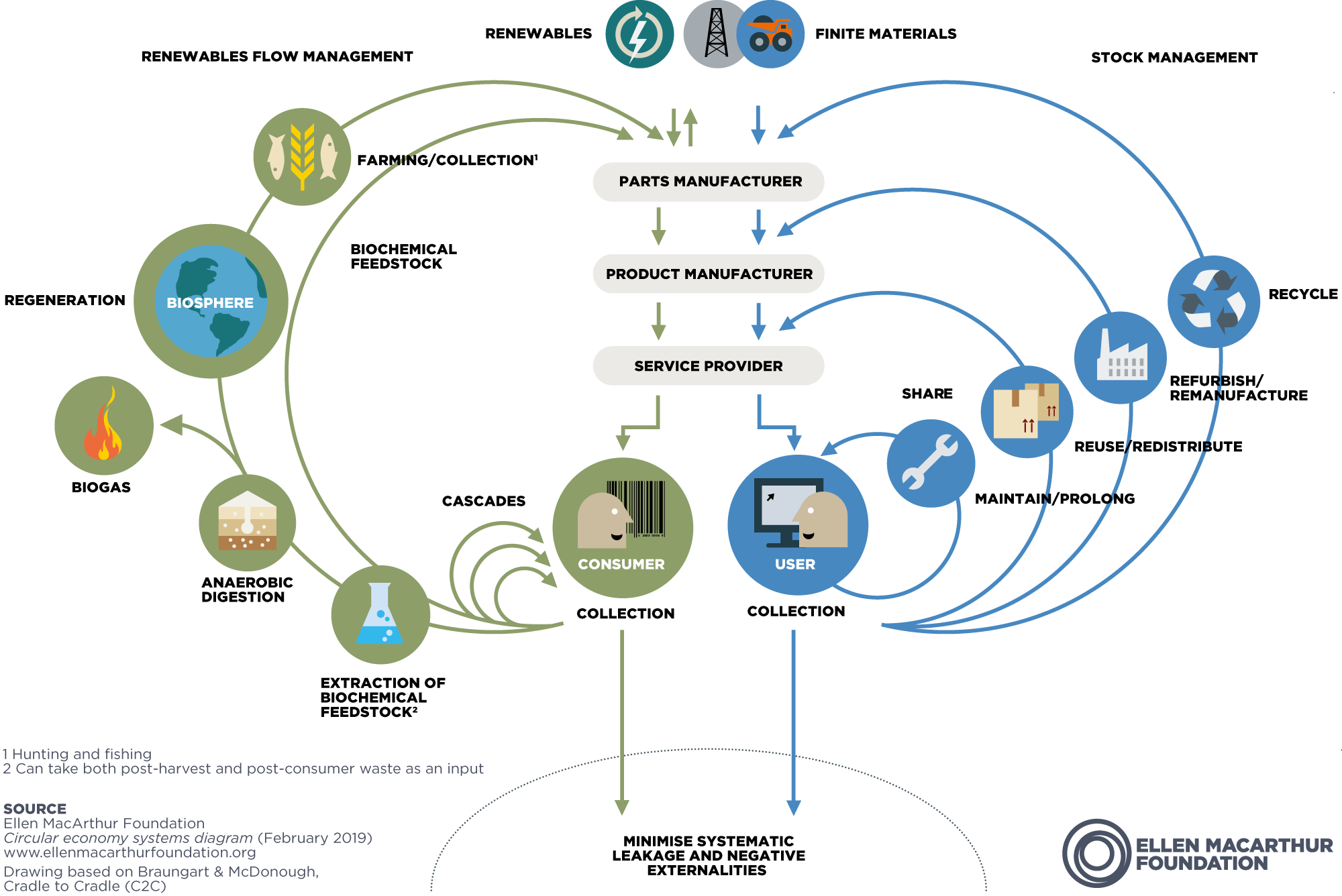Lets work together



Suite 3A, Chapel Allerton House, 114 Harrogate Road, Leeds, LS7 4NY
ukinfo@integrated-skills.com
+44 (0) 3300 888 670

A report produced by Imperial College London predicts having a full Circular Economy will result in a saving of an estimated £2.9bn p/a & the creation of 175000 jobs in the UK. The model is intended to replace the current linear system, one of ‘make, take and dispose’ and see greater circulation – re-use, repurpose and recycling of material goods.
Along with the increase in jobs the saving of money, a CE would see a great reduction in waste and pollution, avoiding further damage to the environment and decreasing the dependence on raw materials. A long-term benefit of adopting the fundamentals of a CE is the preparedness for dealing with emerging resource security or scarcity. As the shift towards renewable energy becomes unavoidable, resilience will have already been established and local economies will thrive on the transformation.

Delivering and implementing a Circular Economy.
A starting point for effective implementation is the overhaul of products and ensure quality and reusability – focussing on materials. A more challenging requirement is to engage the public and change consumer behaviour. A large portion of the public are becoming more sustainable with their consumption already and as the high-street adapts, we see small businesses marketing themselves under the ‘sustainable’ banner.
A key consideration in the introduction of CE is the development of new policy and legislature. Policy must be developed to include elements that encourage businesses to adopt sustainable working practices as well as encouraging the public to make considerations when buying or disposing of products and materials. Legislation to protect sustainable working practice and minimising waste must also be introduced. To keep this cyclical, business will have to adopt circular procurement to drive markets for products and services. Establishing such an approach will involve engaging stakeholders – presenting the bigger picture.
As adoption of the fundamentals becomes more prevalent in the business world, we will see a change in the way business-to-business transaction and support is conducted. Encouraging collaboration and partnerships will also play a considerable role in the delivery of a robust CE. By creating a circular supply chain, we can phase out unsustainable materials. Manufacturing products from bio-based or renewable materials or replacing nonrenewing resources with bio-based or renewable materials e.g. hemp.
Smart Cities are already seeing great benefits from the introduction of new technology and encouraging innovation. A CE is a ripe opportunity for taking advantage of ‘new tools such as AI, the internet of things and biomimicry mean our design ambitions are only limited by our imagination’ (Mayne, 2020). Through embracing new technology – e.g. route optimisations software, better data is gathered and can be scrutinised with greater confidence, shared sincerely and advantageously used to improve services and products.
‘Sustainability which minimises impact and Circular Economy which maximises opportunity’ (Mayne, 2020)
View our webinar exploring the CE further with Brian Mayne here.
Would you like to know more about Establishing a Circular Economy? Fill in your details below and let us know how we can help.
Website Designed & Built by we are CODA